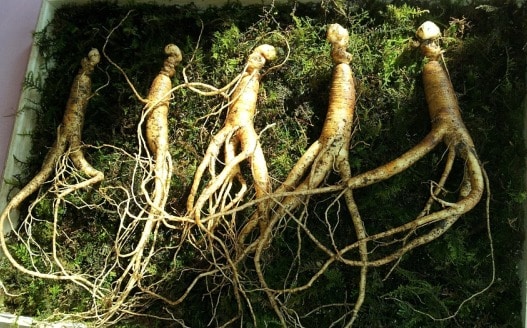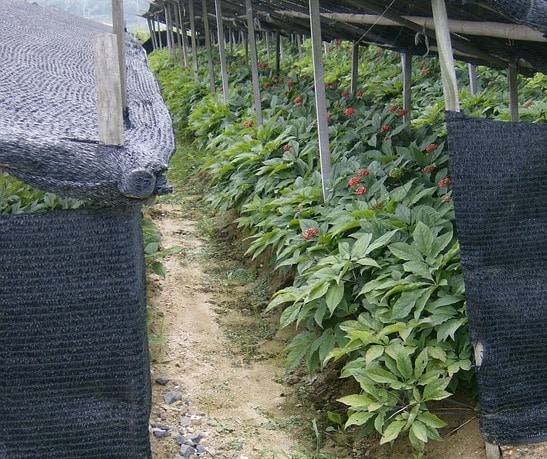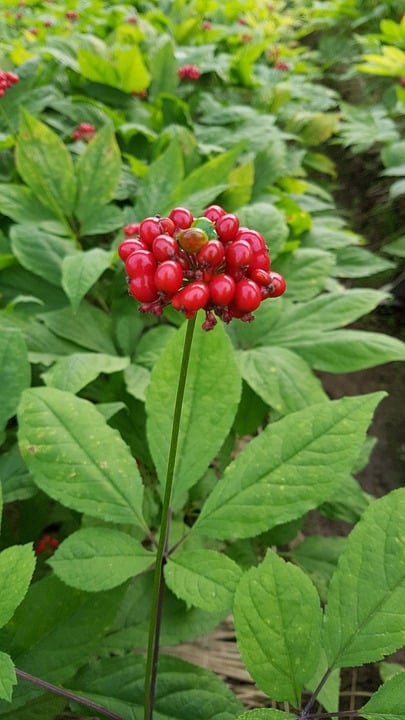Introduction to Growing Ginseng Herb
Today, let us go through the practices of Growing Ginseng Herb.
This is one the medicinal plant which is frequently used in the preparation of Ayurvedic medicines. These are rooted plants, as these are originated from the genus of Panax. The Ginseng herb belongs to Araliaceae family. These Ginsengs are scientifically named as Panax quinquwfolius. The Korean ginseng, American ginseng and South China ginseng also belong to the same genus. These 3 are popularly found in the United States. Since centuries, these Ginsengs are used as medicines. There are many biological effects inconclusive in the ginseng.
These Ginsengs are slow-growing perennials with the fleshy roots. The Ginseng is grown popular in Korea, Japan, China, Vietnam, Siberia and North America. In India, Ginseng is grown commercially in Himachal Pradesh, Tripura, Uttarakhand and Maharashtra. The major producers of Ginseng are Asia, North China and Korea. These are also used in supplements, energy drinks, tea, and beverages.
Characteristics of Ginseng Herb:
Plant: The plant of Ginseng can grow up to 20 – 70 cm, the height changes as the time changes. But the 1st year of the plant, the plant reaches up to 5 cm.
Leaves: A leaflet has 4 – 5 leaves. We can’t find the leaves in the first year. The leaves acquired over the time.
Flowers: On the umbel of the flower we can find 6 – 20 small flowers, they are greenish white in colour. The flowers will appear in the spring season.
Fruits: The fruit of this plant will range 6 – 20 on a plant they will be greenish and then they turn to red on the umbel.
Roots: For the complete maturity of the ground takes 8 – 10 years, the roots of this plant will grow slowly, we can see the growth of the roots every year.
Read: Brahma Chicken Breed Profile.
Health Benefits of Ginseng Herb:

- This will help us in increasing the energy.
- Ginseng herb will also help in improving the cognitive ability.
- This is one of the stress reliever as this will relax the body’s nerves.
- The toxicity of the Alcohol can be reduced by using the ginseng.
- This will also treat the ADHA (Attention Deficit Hyperactivity Disorder).
- Ginseng has capability of curing Anti – inflammatory effects.
- This will help us in treating the erectile dysfunction.
- This will help us in preventing and also managing diabetes.
- This will help us boosting the immune power into the body.
- Ginseng helps in reducing the weight loss.
- This may also help in curing cancer.
- This may also improve the hair health.
Varieties of Ginseng Herb:
- Indian Ginseng
- Asian Ginseng
- American Ginseng
- Brazilian Ginseng
- Siberian Ginseng
Soil and Climate requirements for Growing Ginseng Herb:

The soil, which is more preferred for Growing Ginseng loamy – deep soils that are capable of well draining the water with high organic content in them. The pH level should range near the 5.5. For more inferior quality we can use the extremely sandy soil that tends to produce long and slender roots.
The Ginseng grows in best under natural conditions. The required shade either it is a natural or artificial shade. The annual precipitation, which required annually, is 40 – 50 inch. The required climate for Growing Ginseng is 10˚C. For adequate dormancy, several weeks of cold temperature are required for Growing Ginseng.
Land preparation and Planting for Growing Ginseng Herb:
The land should be prepared well by removing the weeds, pebbles etc. Then the land should be ploughed for 2 – 3 times as it attains fine tilth and smooth texture. Followed by the ploughing the land should be levelled and trilled, then the land should be applied with manure. For a hectare of land we need to apply the farmyard manure.
The plant seedling should be sown in 1/8 – ½ inch deep and 4 inches apart from each row. Across the bed the space of the row should be 6 inches. The plant roots, its roots in angle of 30 – 45 angle from the vertical side.
Propagation method for Growing Ginseng Herb:
The crop of Ginseng grows from the seeds, for the commercial Growing Ginseng this is the least expensive way. For marketable profits from this crop they need to 3- 5 years of producing good yield.
Manure and Fertilization method in Growing Ginseng Herb:
At the time of planting we need farmyard manure; the pits should fill with the mixture of soil and manure.
The field should be applied with fertilizers like nitrogen, phosphorus, and potassium. The nitrogen should be given in two doses at an interval of 60 days and the second after 60 days.
Irrigation methods in Growing Ginseng Herb:
The irrigation should in a limit the water logging can cause damage to the crop in summer a little more than the regularly and in the winter we need to give less and in rainy more less than the regular.
Intercultural methods in Growing Ginseng Herb:

Weeding: In a year the weeding should be done regularly for at least for 2 – 3times. For this plant manual weeding more preferred.
Pruning: The unwanted stems, twigs and branches should be removed so that the air penetrates inside the plant well.
Mulching: These unwanted materials and the weeds can be used for mulching as this mulching will help the plants by conserving the moisture.
Training: The plant of Ginseng is a creeper but we need to trainee the plant right from the seedling as it can trail or climb any fence or wall.
Pest and Diseases control measures in Growing Ginseng Herb:
The pests and diseases that attack the Ginseng crop is:
Pests:
The Pests that attack the while Growing Ginseng is
- Alternaria left
- Stem blight
- Root rot
Control of Pests:
These pests can be controlled by using chemical methods and natural methods.
Diseases:
The Diseases that attack the while Growing Ginseng is
- Root knot nematode
- Rusty root
- Pythium
Control of Diseases:
These pests can be controlled by using chemical methods and natural methods.
Read: Frequently Asked Question About Plant Diseases.
Harvesting techniques in Growing Ginseng Herb:
The harvesting should be done in the 3rd after planting the plant, while harvesting the plant we need to handle carefully as the roots. Harvesting the plant in 3rd is most preferred for good yield.
Post harvesting techniques in Growing Ginseng Herb:
Drying: After they are harvested, then the roots of ginseng should be dried on a wire netting shelves in a hot climate. Over heat can destroy the texture and colour of the roots. The temperature, which is required for drying the roots for the first few days is 26C. Gradually, as the days get increase then we should dry the roots under 32C.
Storage: The storage which is required for the Growing Ginseng is in dry, rodent – proof which is just above the freezing temperature.
Packing: These should be packed in an air tighten boxes or covers.
Marketing: This Ginseng has a high demand on the local and also in international markets.
Yield of Ginseng Herb:
The yield of the Ginseng will be on an average it will be 1 tonne per acre of land. By a typical seed yield will be 150 – 250 lbs per acre.
Read: Pregnant Goat Care Information.
Where can I get ginsing seeds or sapling?
Some of the pics on this page are of Talinum Cuneifolium/fruticosum.
Thanks for your notification, we have updated with correct picture of Ginseng.
Kindly inform us from where we can get seeds or seedlings for planting.
Thank you.
where are you from?
We are looking for Ginseng wild nut stratified
Packing:200 gr pouch
Unik Agro Co td
Maurutius
What’s is expense and profit per acre after 5/6 years?
Hi I am from Rohtak Haryana India. I want to purchase chinies gingsang seeds. From where I can get. Please tell me. Thanks